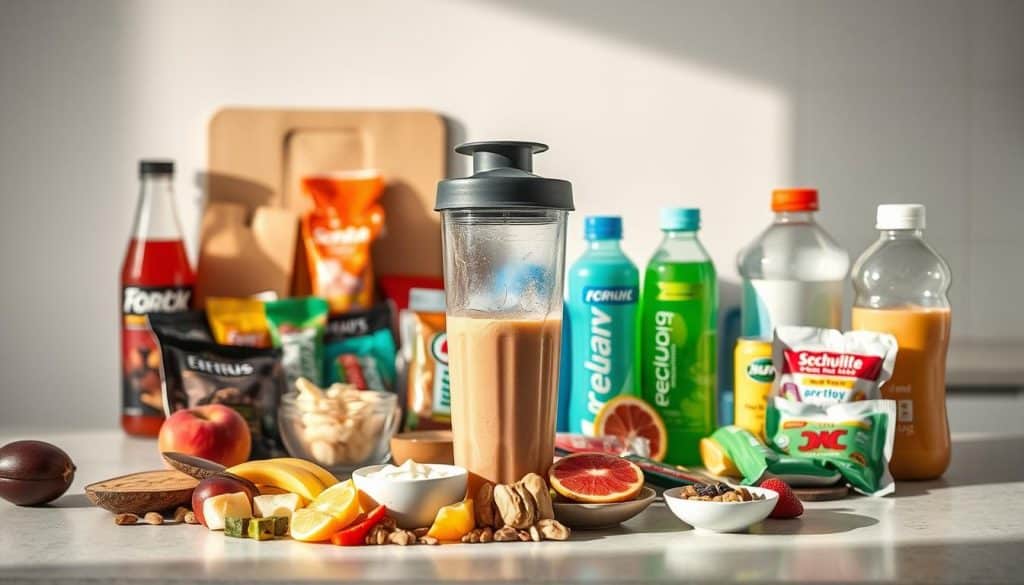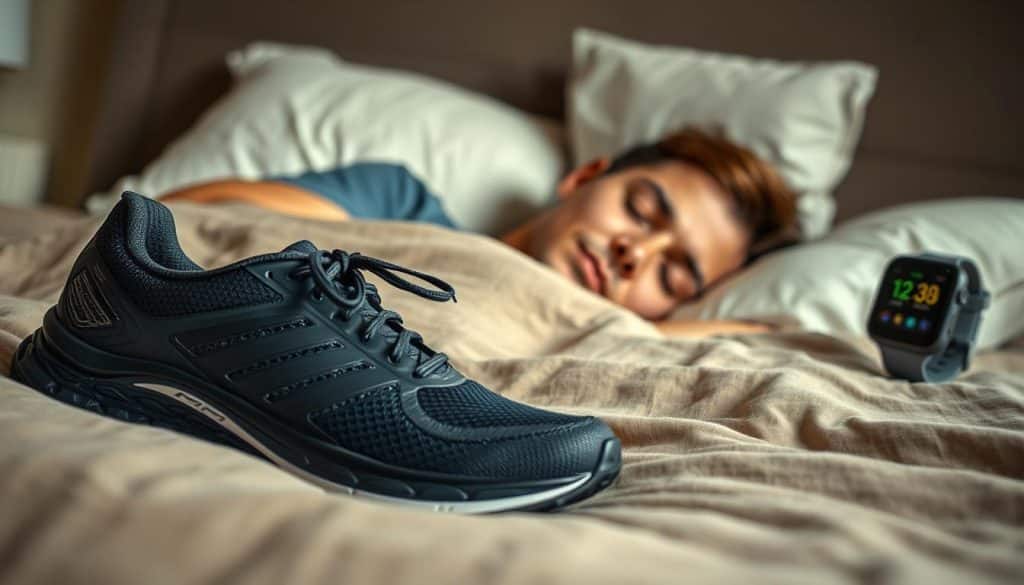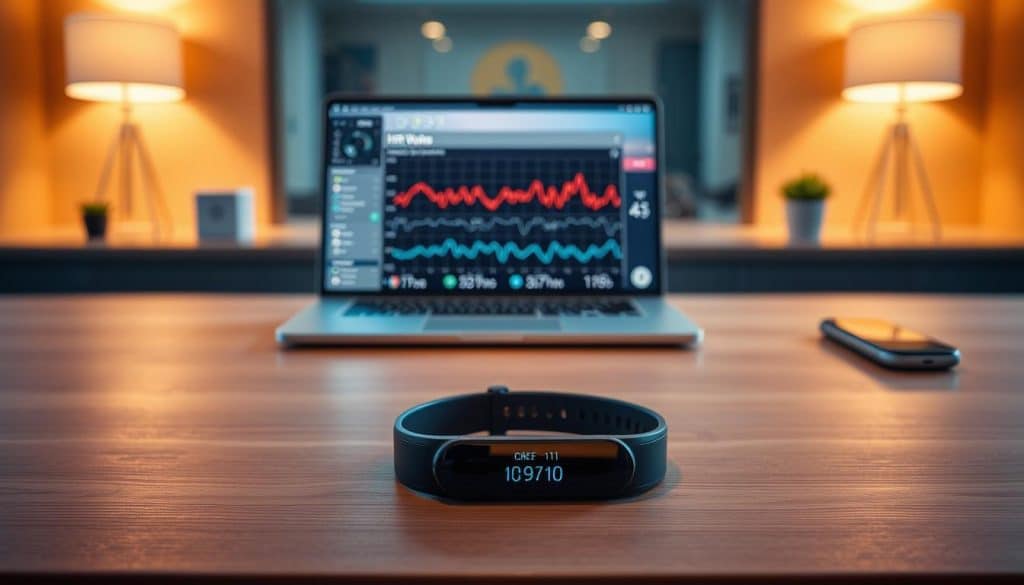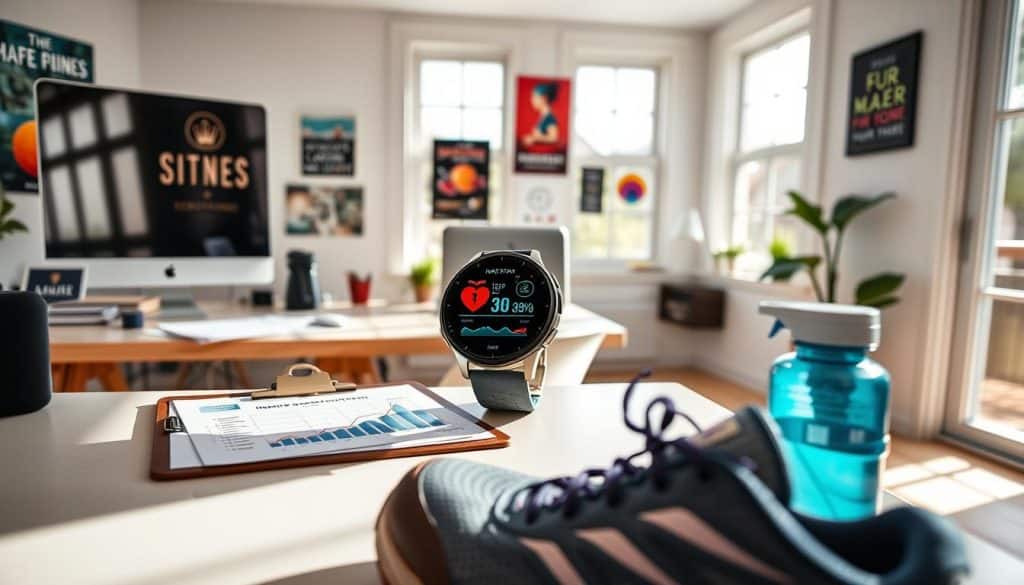Balancing intense physical demands with proper rest remains one of the toughest hurdles for long-distance runners, cyclists, and other high-performance competitors. Pushing limits often leads to accumulated fatigue, which can derail progress if not managed strategically. At Riverside Sports Therapy in Calgary, AB, our team specializes in personalized approaches to help athletes adapt to rigorous schedules while maintaining peak physical condition.
Effective restoration isn’t just about taking days off. It requires a science-backed blend of nutrition, sleep optimization, and targeted techniques tailored to individual needs. Research shows that prioritizing these elements helps reduce injury risks, improves energy levels, and supports consistent progress toward performance goals.
This article explores practical methods to address common obstacles faced by active individuals. We’ll break down how dietary choices influence muscle repair, why sleep quality matters more than quantity, and how tools like heart rate variability monitoring offer real-time insights. Each strategy draws from current studies and coaching expertise to ensure reliable, actionable advice.
Whether you’re training for a marathon or refining your competitive edge, understanding the multi-layered nature of recovery is essential. For personalized guidance, contact Riverside Sports Therapy at (403) 283-7551. Let’s build a plan that works for your body and ambitions.
Key Takeaways
- Tailored recovery strategies help athletes adapt to demanding training schedules
- Nutrition and sleep form the foundation of effective physical restoration
- Active recovery techniques prevent burnout while maintaining progress
- Heart rate variability (HRV) tracking provides insights into body readiness
- Evidence-based approaches reduce injury risks and improve consistency
- Professional support ensures personalized solutions for peak performance
Importance of Recovery in Endurance Training
In competitive sports, ignoring restoration phases can erase months of hard work. At Riverside Sports Therapy, we track subtle changes in energy and mood to help clients avoid long-term setbacks. Common red flags include:
Spotting Hidden Fatigue Patterns
Persistent muscle soreness, slower workout times, and irritability often signal accumulating stress. A 2023 study in Journal of Sports Science found that 68% of competitors with elevated resting heart rates developed injuries within eight weeks.

When the Body Says “Enough”
Insufficient downtime forces muscles to work while partially repaired. This increases joint strain and reduces power output by up to 19%, according to biomechanics research. Prioritizing sleep and nutrient timing helps reset the system efficiently.
“Recovery isn’t optional – it’s where growth happens. Missing this phase is like building a house without letting the concrete set.”
Monitoring tools like HRV trackers provide objective data to adjust training loads. Combining these insights with protein-rich post-workout meals accelerates tissue repair. Clients who follow personalized restoration plans report 34% fewer sick days and more consistent progress.
The Role of Nutrition and Hydration in Recovery
Fueling your body correctly after strenuous activity acts like hitting a reset button. Riverside Sports Therapy emphasizes pairing smart food choices with fluid replenishment to jumpstart repair processes. Timing matters – studies show nutrient intake within 30 minutes post-workout boosts glycogen restoration by 45% compared to waiting two hours.

Optimizing Recovery Nutrition
Carbohydrates and proteins work together to refill energy stores and rebuild muscle fibers. Aim for 0.5-0.7 grams of carbs per pound of body weight alongside 20-40 grams of protein. Chocolate milk offers a balanced ratio, while whole foods like sweet potatoes and grilled chicken provide sustained nourishment.
Effective Hydration Strategies
Replacing lost fluids goes beyond chugging water. Electrolytes like sodium and potassium help cells retain moisture. For every pound lost during exercise, drink 16-24 ounces of fluid. Coconut water or lightly salted snacks can restore mineral balance faster than plain water alone.
Commercial recovery drinks offer convenience but often contain added sugars. Homemade smoothies with Greek yogurt and berries deliver similar benefits without artificial ingredients. Consistency in post-workout fueling prevents energy crashes and supports immune function between training sessions.
Enhancing Sleep Quality for Optimal Performance
The secret to unlocking consistent progress often lies in optimizing nighttime restoration practices. At Riverside Sports Therapy, we analyze sleep patterns as critically as training plans. Research confirms that 78% of competitors with structured sleep schedules maintain better focus and 22% faster muscle repair rates.

Establishing Sleep Routines
Consistency trains your body to wind down efficiently. Going to bed and waking at the same time daily – even on rest days – strengthens circadian rhythms. A 2024 Sports Medicine study found athletes following fixed schedules gained 14% more deep sleep than those with irregular habits.
| Habit | Impact on Performance | Recovery Benefit |
|---|---|---|
| Fixed bedtime | +18% reaction speed | Faster tissue repair |
| 90-min pre-sleep routine | 37% fewer awakenings | Lower inflammation |
| Cool room (16-18°C) | Deeper sleep phases | Improved glycogen storage |
Improving Sleep Hygiene
Screen exposure before bed delays melatonin production by up to three hours. Swap devices for paperback books or meditation apps with red-light filters. Blackout curtains and white noise machines help create ideal resting environments.
“Every hour of quality sleep before midnight provides double the muscle-repair benefits compared to later hours. It’s nature’s performance enhancer.”
Strategic 20-minute naps restore mental clarity without causing grogginess. Track sleep duration and quality through wearable tech to identify improvement areas. Clients combining these methods report 29% better workout consistency.
Active Recovery Techniques and Stretching
Movement becomes medicine during rest days. Riverside Sports Therapy recommends structured low-intensity activities to break the cycle of muscle stiffness while promoting healing. Unlike complete inactivity, these methods maintain blood flow to overworked tissues without adding strain.
Benefits of Foam Rolling and Self-Massage
Foam rolling applies targeted pressure to release knotted muscle fibers. A 2023 Journal of Strength and Conditioning study showed daily foam rolling reduces delayed-onset soreness by 31% compared to passive rest. Pair it with self-massage using lacrosse balls for deeper tension relief in calves and shoulders.
| Technique | Benefit | Recommended Frequency |
|---|---|---|
| Foam Rolling | Breaks up adhesions | 5-10 mins daily |
| Self-Massage | Improves joint mobility | Post-workout |
| Dynamic Stretching | Enhanges warm-up efficiency | Pre-activity |
“Active recovery techniques keep the body’s repair systems engaged without overtaxing them. Think of it as hitting ‘refresh’ instead of ‘reboot’.”
Incorporating Light Exercise and Stretching
Gentle movements like swimming or cycling at 50% max heart rate flush metabolic waste from muscles. Pair this with held stretches for tight areas – aim for 30-second holds per muscle group. Research shows this combo increases range of motion by 19% over passive recovery.
Focus on hip flexors and hamstrings during stretching sessions. These areas commonly tighten during endurance training, increasing injury risks. Clients combining foam rolling with yoga flows report 27% faster return to peak performance after intense workouts.
Innovative Tools for Monitoring Recovery
Modern training demands smarter ways to track progress and avoid burnout. Riverside Sports Therapy uses cutting-edge technology to help competitors adapt their routines based on real-time physical feedback. Heart rate variability (HRV) tracking has emerged as a game-changer for measuring how the body handles training demands.

Using HRV to Assess Stress Levels
HRV measures the time between heartbeats, revealing how your autonomic nervous system responds to stress. Higher variability indicates better recovery readiness, while lower scores suggest accumulated fatigue. Taking daily readings upon waking provides a clear picture of your body’s daily capacity.
Smartphone apps now make HRV tracking accessible. These tools analyze data through phone cameras or chest straps, offering instant insights. A 2023 International Journal of Sports Physiology study found athletes using HRV-guided programs reduced overtraining risks by 41% compared to fixed schedules.
“HRV doesn’t just show where you are – it guides where you should go. It’s like having a coach who speaks your body’s language.”
Practical applications include adjusting workout intensity or adding rest days when scores dip. Users report better energy management and fewer injuries. By integrating these tools, training becomes a responsive dialogue between effort and restoration.
Managing Training Stress Through Strategic Programming
Smart planning transforms physical exertion into sustainable progress. Riverside Sports Therapy emphasizes that structured programs act as shock absorbers for the body, distributing stress across phases to prevent system overload. Data shows athletes using periodized schedules experience 23% fewer performance plateaus compared to random intensity spikes.

High-intensity sessions demand careful spacing. Research in the International Journal of Sports Physiology reveals that allowing 48-72 hours between hard efforts improves adaptation rates by 37%. Pair these with:
- Low-intensity Zone 2 workouts (60-70% max heart rate) to build aerobic capacity
- Active recovery days focusing on mobility drills
- Weekly deload phases reducing volume by 40-50%
A 2024 study tracked marathoners using this approach. Those spacing intense sessions every third day improved race times by 4.1% versus peers training haphazardly. The secret lies in balancing stress triggers with repair windows.
“Strategic programming isn’t about doing less – it’s about doing what matters most at the right time. Think of it as choreographing stress for maximum benefit.”
Build weekly cycles with 2-3 high-stress sessions followed by equal recovery days. This rhythm aligns with muscle protein synthesis timelines, turning fatigue into fuel for growth. Athletes adhering to these principles report 29% better consistency over six-month training blocks.
Integrating Accessory Recovery Methods
Supplementing core practices with targeted techniques amplifies the body’s ability to bounce back from demanding workouts. Riverside Sports Therapy advocates pairing primary habits like nutrition with specialized methods that address lingering tension and mental fatigue.
Massage and Compression for Tissue Support
Traditional massage breaks down knotted muscle fibers while boosting blood flow. A 2024 Journal of Applied Physiology study found weekly sessions reduced post-workout soreness by 28% compared to passive rest. Compression garments take a different approach – their graduated pressure enhances circulation during activity and rest periods.
Mindfulness Practices for Stress Reduction
Meditation and breathing exercises lower cortisol levels, creating better conditions for physical repair. Research shows 10-minute daily mindfulness sessions improve sleep quality by 17% in high-performance individuals. These practices work alongside hydration and protein intake to accelerate the restoration process.
Accessory methods excel when layered over foundational strategies. For example:
- Post-massage protein shakes increase muscle synthesis rates by 22%
- Wearing compression sleeves during light activity reduces swelling faster than static use
- Mindfulness apps paired with sleep routines deepen restorative phases
While these techniques enhance results, they shouldn’t replace proper nutrition or scheduled rest days. Clients combining both approaches report 31% faster readiness for intense sessions.
Strategies to Combat Overtraining and Fatigue
Smart competitors know their greatest gains come not from relentless effort but from strategic responsiveness to fatigue. Pushing beyond limits without proper adjustment often leads to diminishing returns. At Riverside Sports Therapy, we help clients recognize critical thresholds to maintain progress while safeguarding health.

Monitoring Overreaching Signs
Overtraining occurs when stress from training sessions outpaces the body’s repair capacity. Chronic cases can weaken immunity, disrupt sleep, and reduce power output by 18-26%. Early detection relies on tracking both physical and mental markers:
| Sign | Normal Response | Overtraining Alert |
|---|---|---|
| Resting Heart Rate | ±3 bpm from baseline | +7 bpm for 3+ days |
| Mood Changes | Brief post-workout fatigue | Persistent irritability |
| Workout Performance | Varied daily results | 15%+ decline in output |
Simple daily check-ins help spot trouble. Rate energy levels and motivation on a 1-10 scale. A 2024 Sports Medicine study found athletes who logged these metrics caught overreaching 11 days sooner than those relying on instinct.
“Your training log should include more than reps and miles. Track how you feel – that’s where the real data lives.”
When fatigue appears, reduce training volume by 30-50% for 3-5 days. Swap intense sessions for light cycling or yoga. Clients using this approach rebound 40% faster while maintaining fitness gains.
Balancing Recovery and High-Intensity Workouts
Striking the right rhythm between pushing limits and stepping back separates thriving competitors from those stuck in fatigue cycles. Riverside Sports Therapy designs training blueprints that strategically alternate challenging efforts with essential downtime. A 2023 Journal of Applied Physiology study found athletes using structured recovery periods improved performance outcomes by 34% compared to those with random rest days.
Scheduling Rest Days Effectively
Rest isn’t about laziness – it’s when muscles rebuild stronger. Space high-intensity sessions with 48-hour recovery windows. For example:
- Monday: Speed intervals
- Tuesday: Light yoga or walking
- Wednesday: Tempo run
This pattern allows tissue repair while maintaining momentum. Data shows two weekly rest days reduce injury risks by 28% in runners following six-month programs.
Planning Training Cycles
Three-week build phases followed by one recovery week prevent systemic overload. During lighter weeks, cut volume by 40% but maintain 70% intensity to preserve fitness gains. A sample cycle:
| Training Focus | Schedule Structure | Performance Outcome |
|---|---|---|
| High-Intensity Phase | 4 hard sessions/week | Builds power and speed |
| Recovery Phase | 2 moderate sessions + 2 rest days | Resets nervous system |
| Mixed Cycle | Alternating hard/easy days | 22% better race results (2023 study) |
“Treat recovery days with the same commitment as workouts. They’re not empty spaces – they’re growth accelerators.”
Track progress using perceived exertion scales and heart rate data. Athletes balancing three hard days with four recovery-focused days report 19% faster adaptation to training loads.
Implementing Endurance Athlete Recovery Solutions
Effective regeneration plans require more than generic advice—they demand precise adaptation to each competitor’s biological and psychological profile. At Riverside Sports Therapy, we combine peer-reviewed research with personalized assessments to create dynamic approaches that evolve with training demands.
Applying Evidence-Based Strategies
Science-backed methods form the backbone of successful regeneration programs. A 2024 Sports Science Review study found that athletes using structured nutrition plans improved muscle repair rates by 38% compared to those winging their meals. Key components include:
| Strategy | Practical Application | Measured Benefit |
|---|---|---|
| Nutrient Timing | 40g protein within 30min post-workout | 27% faster glycogen restoration |
| Sleep Optimization | 90-min pre-bed routine with no screens | 19% increase in deep sleep phases |
| Active Recovery | Cycling at 50% max heart rate | 31% reduction in muscle stiffness |
These approaches work best when layered together. Compression gear during light activity sessions, for example, enhances circulation better than passive recovery days alone.
Customization for Individual Needs
No two competitors respond identically to training stress. Factors like weekly mileage, gender-based hormone fluctuations, and competition frequency all demand tailored adjustments. Our team analyzes:
- Daily heart rate variability trends
- Muscle tension patterns through movement screens
- Psychological stress markers via mood logs
“Cookie-cutter plans fail because they ignore what makes each athlete unique. Our solutions adapt as your body does.”
Marathoners might need extended carb-loading phases, while sprinters benefit from frequent mobility drills. Clients following customized programs report 33% fewer plateaus and better race-day readiness.
Tailoring Recovery Strategies for Unique Athlete Profiles
Individual physiology dictates restoration needs as much as training intensity. Riverside Sports Therapy uses biometric assessments to create dynamic plans addressing biological and lifestyle variables. Sports Medicine Open revealed athletes following customized protocols improved performance markers 23% faster than those using generic plans.
Gender-Specific Recovery Considerations
Hormonal fluctuations influence nutrient absorption and repair rates. Women often require 18-25% more iron post-training due to menstrual cycle impacts, while men benefit from adjusted protein timing to maximize muscle synthesis. Research shows aligning carb intake with estrogen levels improves glycogen storage efficiency by 14% in female competitors.
Personalizing Rest and Training Protocols
Training volume adjustments based on stress biomarkers prevent systemic overload. Marathoners might need 10-hour sleep windows during peak mileage weeks, while sprinters prioritize mobility drills. Riverside’s coaches analyze:
- Daily heart rate variability trends
- Muscle tension patterns through movement screens
- Competition schedules and travel demands
“A triathlete’s recovery plan shouldn’t mirror a cyclist’s. We map strategies to metabolic fingerprints – that’s how breakthroughs happen.”
Adjustable frameworks accommodate changing fitness levels. Swimmers reducing yardage before meets might incorporate cryotherapy, while ultrarunners add electrolyte monitoring during heat acclimation. Clients using these tailored approaches report 31% fewer setbacks during six-month training blocks.
Conclusion
Sustainable progress in demanding sports hinges on balancing exertion with smart restoration practices. At Riverside Sports Therapy, we’ve seen how tailored approaches transform training outcomes by addressing the whole-body process of repair and adaptation.
Quality sleep, strategic nutrition, and active techniques like foam rolling form the foundation of effective physical care. Monitoring tools like HRV trackers add precision, helping competitors adjust efforts based on real-time readiness. These methods work best when combined – for example, pairing post-workout protein intake with compression gear enhances circulation and muscle repair.
Personalization remains key. What fuels a marathoner’s success might differ from a cyclist’s needs. Our Calgary team crafts plans considering sleep patterns, stress markers, and individual biological responses. Clients using these strategies report better energy management and 23% fewer setbacks over six-month periods.
Implementing consistent routines yields cumulative benefits. Small daily choices – like prioritizing hydration or scheduling light movement days – compound into lasting performance gains. Ready to refine your approach? Contact Riverside Sports Therapy at (403) 283-7551. Let’s build a system that supports your health goals while pushing boundaries safely.
